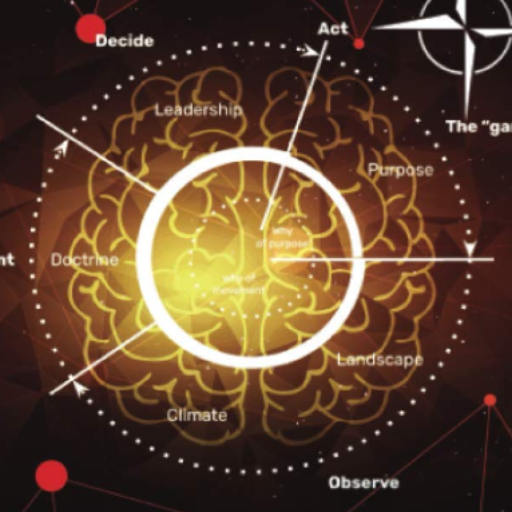Nduvho's Wardley Mapping-Wardley Mapping strategy tool
AI-powered tool for strategic mapping
Tell me about Wardley Maps
How do I create a Wardley Map?
Explain the evolution axis in Wardley Mapping
Discuss the history of Wardley Mapping
Related Tools
Load More
Mapa Mental
Especialista em explorar e expandir tópicos

Roadmap Architect
I craft detailed, personalized roadmaps to guide you towards your goals.

Outcome-based Product Roadmap
Visual roadmap generator (with a bucketing system)

Learn Wardley Mapping
I guide you in learning and applying Wardley Maps.

Futures Wheel Explorer
An expert in Futures Wheel extrapolation and analysis, providing insightful effects of trends and signals.

Wardley Map Analyst
Analyzes and visualizes Wardley Maps from text
20.0 / 5 (200 votes)
Introduction to Nduvho's Wardley Mapping
Nduvho's Wardley Mapping is designed to assist organizations in strategic decision-making using the Wardley Mapping technique, developed by Simon Wardley. It functions by creating visual maps of an organization’s value chain, positioning components according to their level of maturity and importance in meeting user needs. The primary purpose of this tool is to enable businesses to better understand their environment, adapt to changes, and plan strategically. Wardley Maps help businesses visualize their components from genesis to commoditization, positioning them along the axes of evolution and value chain. By mapping out the dependencies and understanding market forces, organizations can anticipate future changes, mitigate risks, and focus on delivering user value. For example, a company in the energy sector might use Wardley Mapping to visualize its core infrastructure (e.g., power generation, distribution systems) and its dependencies (e.g., renewable energy sources, governmental regulations). By doing so, the company can identify emerging opportunities (such as the evolution of solar power) and decide how to invest in innovation or automation while maintaining cost efficiency.

Main Functions of Nduvho's Wardley Mapping
Generate Wardley Maps
Example
A consulting firm wants to assess its service offerings in relation to customer needs. The firm generates a Wardley Map to visualize how different components like data analytics and client consultations are evolving. The map highlights areas of commoditization where services can be automated and where innovation is necessary to remain competitive.
Scenario
By generating Wardley Maps, businesses can gain insights into their value chains and better understand how different components relate to one another. This helps in determining where to allocate resources, identify risks, and explore opportunities.
Save and Edit Wardley Maps
Example
A tech startup visualizes its product development process using Wardley Mapping. As the business evolves and new technologies emerge, the startup can save its maps and make real-time adjustments to reflect new dependencies, such as adopting cloud infrastructure or transitioning to AI-driven features.
Scenario
The ability to save and edit maps allows organizations to continually adapt their strategies as market conditions change. This is especially useful for businesses undergoing rapid evolution, as it enables constant reassessment of priorities and adaptation to emerging technologies.
Fetch Existing Wardley Maps
Example
A healthcare company, after conducting an internal review, retrieves its previously saved Wardley Map to re-evaluate its digital health services. The company fetches the map to examine how new telemedicine tools fit into its value chain and assess which components need improvement or partnerships.
Scenario
Fetching previously created maps provides organizations with the ability to compare past strategies with current trends. This helps businesses refine their strategic decisions by reflecting on past actions and measuring the impact of previous choices.
Ideal Users of Nduvho's Wardley Mapping
Business Strategists and Decision Makers
Business strategists who are responsible for making high-level decisions will benefit from Nduvho's Wardley Mapping by gaining clarity on their company's value chains, competitive positioning, and market forces. This tool allows them to visualize how their business components evolve, helping in planning strategic moves and understanding where to invest or divest resources.
Technology and Innovation Teams
Tech teams can use Wardley Maps to assess the maturity of their technology stacks, identifying areas that are becoming commoditized and where innovation is needed. This helps them align their efforts with organizational goals, prioritize projects, and explore emerging technologies such as AI, cloud computing, or blockchain.

How to Use Nduvho's Wardley Mapping
Visit aichatonline.org for a free trial without login, also no need for ChatGPT Plus.
Access the Wardley Mapping tool for free without needing to sign up or provide payment information.
Identify Your Business Components
Define the core elements of your business including products, services, and key dependencies. This will form the basis of your map.
Create a Value Chain
Arrange these components based on how they support your business goals and customer needs. Consider dependencies and relationships.
Map Component Evolution
Position components along the evolutionary axis, from 'Genesis' (early innovation) to 'Commodity' (standardized and well-understood).
Analyze and Refine the Map
Examine the map for strategic gaps or areas where opportunities for innovation or cost reduction exist. Adapt your strategy accordingly.
Try other advanced and practical GPTs
Design Maestro 2000
AI-powered design, simplified.

Social Media Maven
AI-Powered Social Media Content Creation

Design Genius
AI-powered custom designs for POD

SQL Optimizer
Optimize Your SQL with AI Power

Code Mentor
AI-powered guidance for coding & learning

Sui Move GPT
AI-powered Sui Move coding tool

Transcript Polisher
AI-Powered Transcript Polishing

Blender Buddy AI
AI-powered Blender 3D assistance
NeverDeny
AI-powered tool for tailored content generation.

VitaCheck
AI-driven health optimization for supplements

自動小説生成
AI-powered novel and story generator.

完蛋,我被美女包围了(AI同人)
Engage in immersive AI-driven conversations.

- Market Analysis
- Business Strategy
- Operational Efficiency
- Competitive Landscape
- Innovation Mapping
Q&A About Nduvho's Wardley Mapping
What is Wardley Mapping?
Wardley Mapping is a strategic visualization tool used to understand business landscapes. It helps organizations map the components of their value chain while tracking the evolution of each component, enabling better decision-making and strategy development.
How can I use Wardley Mapping for my business?
You can use Wardley Mapping to visualize your value chain, identify areas for improvement, and understand how different components of your business evolve over time. This helps in making informed decisions about resource allocation, technology adoption, and innovation.
Can I use Wardley Mapping without prior experience?
Yes, Wardley Mapping is intuitive. Begin by defining your business components, their relationships, and positioning them on the evolutionary axis. The process encourages a clear and evolving understanding of your business environment.
What industries can benefit from Wardley Mapping?
Wardley Mapping can be used across industries like IT, finance, healthcare, and manufacturing to improve strategic planning, innovation, and efficiency by mapping business dependencies and market forces.
How often should I update my Wardley Map?
It is recommended to update your Wardley Map regularly, especially when there are shifts in market conditions, technological advancements, or changes in customer needs. Regular updates ensure that your strategy remains aligned with the evolving landscape.